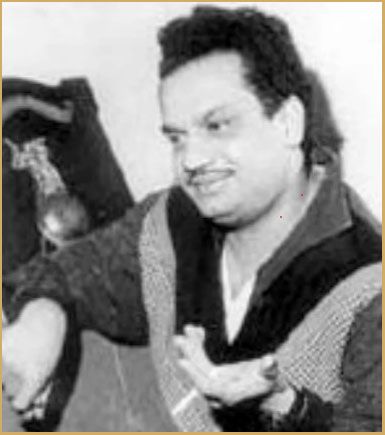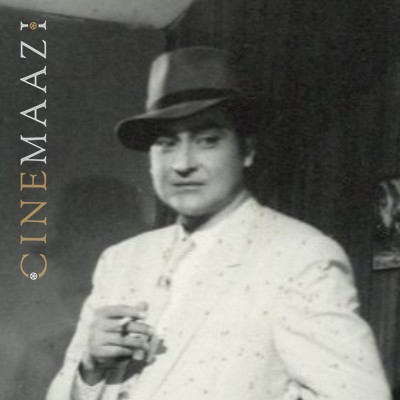Datta Naik

Subscribe to read full article
This section is for paid subscribers only. Our subscription is only $37/- for one full year.
You get unlimited access to all paid section and features on the website with this subscription.
Not ready for a full subscription?
You can access this article for $2 , and have it saved to your account for one year.
- Real Name: Dattaram Baburam Naik
- Born: 12 December 1927 (Goa)
- Died: 30 December 1987 (Bombay)
- Primary Cinema: Hindi
- Children: Roop Naik
Datta Naik or N Datta, as he was also called, was known to be an intuitive music director, who would use minimum orchestra to develop the right atmosphere expressed in the song. Starting off as assistant to the legendary S D Burman, he worked in films such as Ek Nazar (1951), Jaal (1952), Jeevan Jyoti (1953) and Angarey (1954). He went on to develop a long and fruitful partnership with Sahir Ludhianvi, whose lyrics lent his compositions the required depth, even as he worked with other noted lyricists such as Majrooh Sultanpuri and Jan Nisar Akhtar. His body of work includes well-appreciated songs such as Tu mere pyaar ka phool hai, Daman mein daag laga baithe, and Tu Hindu banega na Musalman banega from Dhool Ka Phool (1959), Aye dil zubaan naa khol from Naach Ghar (1959), Aurat ne janam diya mardon ko and Kahoji tum kya kya kharidoge from Sadhna (1958), Main jab bhi akeli hoti hoon and Saare jahaan se achha from Dharm Putra(1961), Ponch kar ashk apni aankon se and Maine pee sharaab from Naya Raasta (1970) and Tere is pyar ka shukriya from Aag Aur Daag (1971). Naik also composed for music for several Marathi films. While he was dogged by ill health and commercial failure in the later years, Naik remains memorable for his fine sense of melody and orchestration.
Born on 12 December, 1927 in Bombay, he was raised in the village of Aroba in Goa. It was here that he was exposed to devotional music in the neighbourhood temple, as well as the performances of touring Marathi musical theatre groups. Instructed by his maternal uncle to concentre on his studies, Datta, a young lad at the time, instead chose to run away to Bombay. Doing the rounds of the studios, he later went on to assist music director Kedar Shinde. Datta also apparently briefly assisted legendary composer Ghulam Haider. He actively participated in prabhat pheris and other local festivals, which was where S D Burman first heard him sing his own composition. Impressed, Burman hired the young Datta, and he went on to assist Burman on several films. Naik also worked with talents such as the arranger Anthony Gonsalves, poet Sahir Ludhianvi and fellow assistantJaidev.
Naik got his break with the Punjabi film Baalo (1951); however, he became known as an independent music director with Raj Khosla’s Milap (1955) and G P Sippy’s Marine Drive (1955). His songs such as Ab woh karam karen ki sitam from Marine Drive; Yeh baharaon ka sama from Milap, and Maine chand aur sitaron ki tamanna ki thi from Chandrakanta (1956) came in for attention. Incidentally, all these songs had been penned by Sahir, who recommended Naik’s name after his fallout with S D Burman and O P Nayyar.
Naik’s music for Sadhana (1958), a film which did very well at the box office, was appreciated especially for his treatment of the song Aurat ne janam diya mardon ko, which established a template, so to speak, which was repeated in B R Chopra’s Dharamputra (1961) with its songs such as Main jab bhi akeli hoti hoon rendered by Asha Bhosle), and Tumhari aankhen and Aaj ki raat sung by Mahendra Kapoor.
Naik also had a productive working relationship with Jan Nisar Akhtar, who was a close friend of Sahir. They together created Main tumhi se poochhti hoon (Black Cat, 1959), which was a beautiful duet rendered by Lata-Rafi. Naik also scored the music for the Kishore Kumar-Mala Sinhastarrer Jaalsaaz (1959), winning praise for the Kishore-Asha Pyar ka jahaan ho and Mere dil meri jaan.
It was Naik’s work in Dhool Ka Phool that remains perhaps most memorable. The film, which saw Yash Chopra make his debut as a director, revolved around a Muslim man bringing up a Hindu child. While the romantic songs such as Tere pyar ka aaasra chahta hoon and Jo tum muskura do were appreciated, it was the classic Tu Hindu banega na Musalman banega that remains most special. Incidentally, Naik had used the same melody earlier in the Rafi-rendered song Kya kya na sitam tujh pe huye in the film Mohini (1957).
Post Dharmputra, B R Chopra sought to repeat Naik for his next production—however Naik suffered a heart attack at that point. In his thirties, this sudden shock left him fearful for life. Unfortunately, the films he was thereafter offered did not succeed at the box office. While the Talat Mahmood ghazal Ashqon ne jo paaya hai from Chandi Ki Deewar (1964) became popular, his subsequent songs remained largely unheard. Songs such as the Asha Bhosle-rendered Chand bhi koi deewana hai and Jigar mein dard (with Kamal Barot), from Phani Majumdar’s film Apna Ghar Apni Kahani which was released as Pyaas (1968), prove that Naik retained his talent for scoring simple, effective tunes. He also composed music for Marathi films such as Apradh (1969) and Bala Gau Kashi Angai (1977), which includes the Suman Kalyanpur-rendered lullaby, Nimbonichya jhadamage.
Towards the end of the 70s, Naik attempted to rekindle his old connections in the film industry. However, with Chehre Pe Chehra (1981) tanking at the box office, his hopes of fresh offers dried up. His later years were spent fighting ill health and commercial failure. The 1980 film Chehre Pe Chehra was his last Hindi film. Datta Naik passed away on 30 December, 1987. The Maharashtra government honoured him by renaming a road near his house as the Sangeetkar N Dutta Marg.
References
Image credit: https://www.youtube.com/watch?v=PlMjpxE_JQ8










.jpg)



